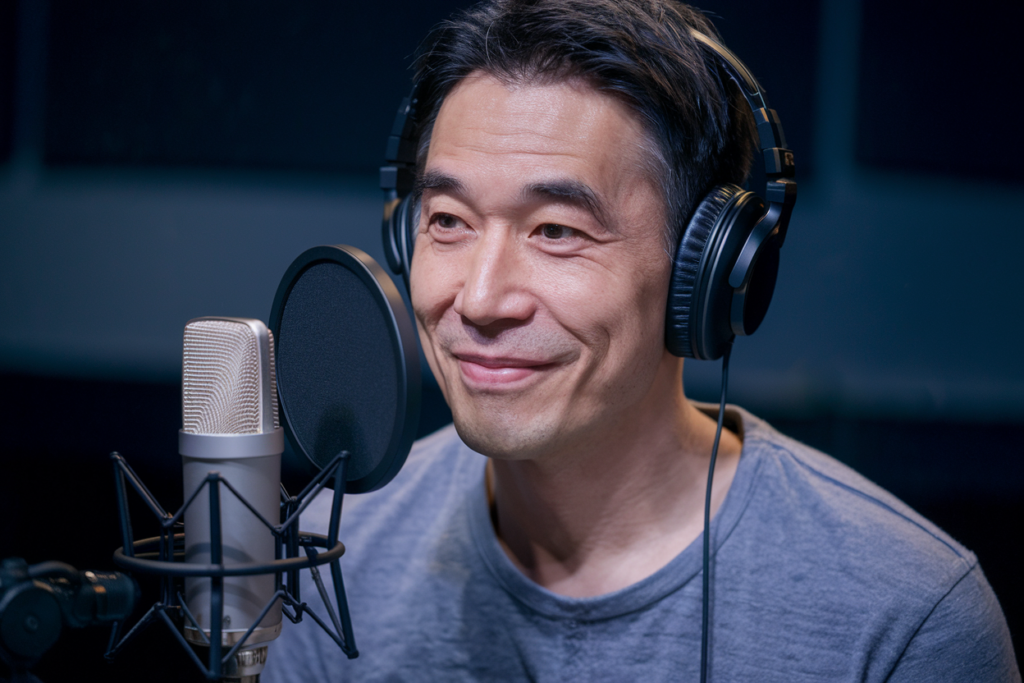Key Takeaways
- Cultural Nuances Matter: Understanding Japanese culture’s emphasis on harmony and subtlety is key to directing voice talent effectively, allowing for deeper emotional performances.
- Effective Communication: Utilize clear guidance and constructive feedback tailored to the unique communication styles of Japanese voice actors, fostering open dialogue for better collaboration.
- Thorough Preparation: Invest time in script translation and character development discussions to ensure voice talent grasps emotional tones and character motivations for authentic interpretations.
- Build Rapport: Establishing trust and appreciation with voice actors enhances their performance quality; respect their cultural values and encourage creative input during sessions.
- Provide Clear Direction: Use specific language when conveying your vision, breaking down complex scenes into manageable parts to avoid confusion and facilitate focused deliveries.
- Post-Session Reflection: Conduct thorough reviews after each session to discuss feedback, identify areas for improvement, and ensure high-quality standards in recordings.
Ever wondered how to get the best performances from Japanese voice talent? Directing voice actors can be a challenge, especially when navigating cultural nuances and language barriers. But with the right approach, you can unlock incredible vocal performances that resonate with your audience.
Understanding Japanese Voice Talent
Understanding Japanese voice talent involves recognizing cultural nuances and communication styles, which significantly influence performance. By grasping these elements, you can direct voice actors effectively for authentic and engaging results.
Cultural Nuances
Cultural context plays a vital role in voiceover work. Japanese culture emphasizes harmony, respect, and subtlety. This often reflects in the delivery of voice talents who may prioritize collective feedback over individual expression. You’ll find that many voice artists are trained to convey emotions delicately rather than overtly. This means they might hold back intensity when delivering lines unless prompted otherwise. Embracing this aspect allows you to tap into deeper emotional layers during recordings.
To engage with your voice talent effectively, consider incorporating practices that foster trust and rapport. Show appreciation for their craft, as recognition can enhance performance quality. Additionally, be mindful of non-verbal cues like body language or pauses; these can communicate volumes in a setting where words may not fully capture intent.
Communication Styles
Directing Japanese voice actors requires an understanding of their unique communication style. Many prefer clear guidance and constructive feedback delivered gently rather than abruptly or harshly. Use specific examples when providing direction to illustrate desired outcomes clearly—this approach helps bridge any potential language barriers.
Engagement is crucial here; ask questions to ensure clarity while encouraging open dialogue about the script’s emotional tone or character motivations. This two-way interaction nurtures collaboration between you and the voice artist, resulting in more nuanced performances.
By appreciating cultural nuances and adapting your communication style accordingly, you’ll enable better connections with your Japanese voice talent—leading to outstanding vocal performances that resonate with audiences globally.
Pre-Session Preparation
Preparing for a session with Japanese voice talent involves several key steps to ensure smooth communication and optimal performance.
Script Translation Considerations
Script translation plays a crucial role in voiceover sessions. It’s essential to work with translators who understand the nuances of both languages. A literal translation might not capture the intended emotions or cultural references, leading to performances that feel flat or disconnected. Providing context alongside the script helps voice actors deliver authentic interpretations. Make sure your script includes character backgrounds, emotional tones, and specific instructions on how you envision each line. This level of detail aids voice talent in grasping the intent behind each phrase.
Character Development Insights
Character development is vital for engaging performances. Share comprehensive details about each character’s personality, motivations, and relationships within the story. Discuss how these elements influence their speech patterns and emotional expressions. Voice artists thrive on understanding their characters deeply; this connection translates into more compelling deliveries during recording sessions. Encourage your voice actors to ask questions about their roles—this dialogue fosters creativity and enhances collaboration overall. By investing time in character development discussions before recording begins, you set the stage for outstanding vocal portrayals that resonate with audiences worldwide.
Directing Techniques
Directing Japanese voice talent requires a thoughtful approach. Understanding the nuances of communication and culture enhances your ability to guide voice actors effectively.
Building Rapport with Talent
Building rapport with voice talent is essential for successful sessions. Start by establishing trust. Show appreciation for their craft, and engage in conversations about their experiences. Respect goes a long way; acknowledging cultural values fosters a supportive environment. You might find that small gestures, like using their preferred pronouns or addressing them respectfully, create an instant connection.
Encourage open dialogue during sessions. Invite questions and feedback from the voice artist about the script or character motivations. This collaborative atmosphere not only improves performance but also helps you tap into their creativity. Remember, when they feel valued as artists, they’re more likely to deliver outstanding voiceovers that resonate with audiences.
Providing Clear Direction
Providing clear direction makes all the difference in achieving desired outcomes from voice actors. Use specific language when conveying your vision for each scene or character—avoid vague terms that may lead to confusion. For instance, instead of saying “make it more emotional,” specify if you want a soft tone or an intense burst of feeling.
Utilize examples from other projects or reference clips to illustrate what you’re looking for in performances. Visual aids can bridge any gaps in understanding and paint a clearer picture for your voice over talent.
Break down complex scenes into manageable parts during recording sessions; this allows the actor to focus on delivering one emotion at a time rather than getting overwhelmed by the entire script’s demands.
By combining these techniques—building rapport and providing clear direction—you pave the way for exceptional vocal performances that captivate your audience and elevate your project’s impact.
Post-Session Review
Post-session reviews play a vital role in refining your approach to directing Japanese voice talent. These reviews provide an opportunity to reflect on the session’s dynamics and identify areas for improvement.
Feedback and Adjustment
Feedback is essential for growth, both for you and the voice actors. After each session, take time to discuss what worked well and what didn’t. Encourage voice artists to share their thoughts about directions received; this open dialogue creates a collaborative environment where both parties can learn from each other. Adjustments based on this feedback help refine future sessions, leading to more effective communication styles that resonate with the unique qualities of Japanese voice talents.
Ensuring Quality Control
Quality control ensures that every aspect of the recording meets high standards. Review recordings promptly after sessions while details are fresh in your mind. Listen for clarity, emotional delivery, and adherence to character motivations. If inconsistencies arise or if emotions don’t align with expectations, note them down for future reference. Providing specific examples during feedback helps voice actors understand nuances better, ensuring they deliver top-notch performances consistently.
By focusing on these aspects during post-session reviews, you enhance collaboration with Japanese voice talent and achieve exceptional results in your projects.
Conclusion
Directing Japanese voice talent is a rewarding yet intricate process that demands patience and understanding. By embracing cultural nuances and fostering open communication, you can create an environment where voice actors feel valued and inspired.
Building rapport with your talent encourages creativity and enhances performance quality. Ensure you’re providing clear direction while remaining receptive to their insights. This collaborative approach not only enriches the final output but also deepens the connection between you and the artists.
As you refine your techniques through thoughtful feedback and post-session reviews, you’ll continuously elevate your directing skills. Ultimately, valuing these key aspects will lead to unforgettable vocal performances that resonate with audiences around the world.
Frequently Asked Questions
What are the main challenges of directing Japanese voice talent?
Directing Japanese voice talent involves navigating cultural nuances and language barriers. Understanding the importance of harmony, respect, and subtlety in Japanese culture is crucial for effective direction. Establishing trust and open communication can help translators convey emotions accurately, enhancing performance quality.
How can directors build rapport with Japanese voice actors?
To build rapport, directors should appreciate the craft of voice actors and be mindful of non-verbal cues. Engaging in open dialogue fosters trust, allowing for constructive feedback and collaboration. Providing a supportive environment encourages voice artists to express their creativity freely.
Why is script translation important in this process?
Script translation is vital because literal translations may not capture the intended emotions or cultural references. Working with skilled translators who understand both languages’ nuances ensures that context, character backgrounds, and emotional tones are conveyed effectively for authentic interpretations.
What role does character development play in voice acting?
Character development is essential for engaging performances. Sharing detailed insights about each character’s personality, motivations, and relationships helps voice actors connect deeply with their roles. This connection leads to more compelling vocal deliveries that resonate with audiences.
How should directors provide guidance during recording sessions?
Directors should offer clear direction by using specific language and examples to convey their vision effectively. Breaking down complex scenes into manageable parts allows actors to focus on delivering one emotion at a time, ultimately enhancing performance quality.
Why are post-session reviews necessary?
Post-session reviews allow directors to reflect on session dynamics and identify areas for improvement. They encourage feedback between directors and voice actors, fostering growth through open dialogue about what worked well or didn’t during recordings.
What aspects should be focused on during quality control?
During quality control, it’s essential to review recordings promptly for clarity, emotional delivery, and adherence to character motivations. Noting inconsistencies provides specific feedback that helps improve understanding among voice actors while ensuring consistent high-quality performances.







